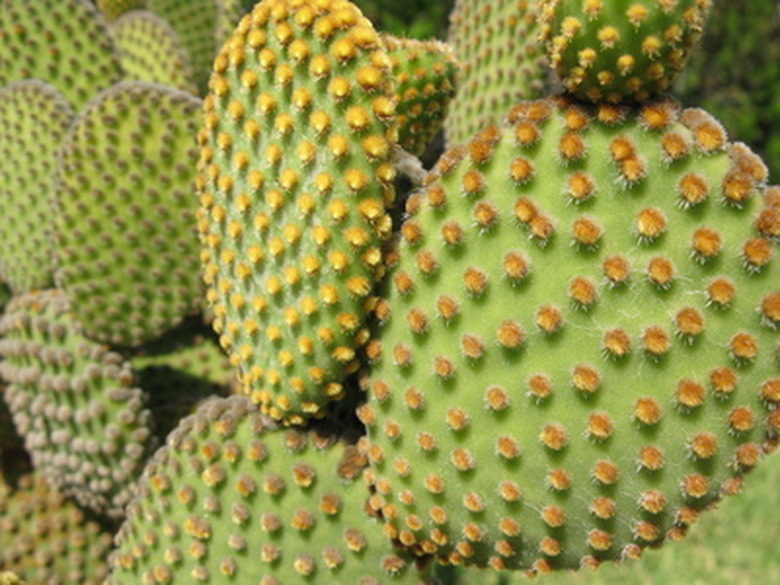How To Grow Cacti In The South
Things Needed
- Pot
- Fertilizer
The South is not known for cacti, but that doesn't mean you can't successfully grow them in the southern states, which include Alabama, Arkansas, Florida, Georgia, Louisiana, Mississippi, North Carolina, South Carolina, Tennessee, Texas and Virginia. Some native cacti include the prickly pear, agave and yucca. While those can withstand Southern winters in the ground, most cacti cannot. To grow other cacti, you must follow the proper maintenance requirements.
Step 1
Select cacti that you can handle. Many will grow several feet, and with the pot and dirt, they may weigh 50 lbs. or more. Most nurseries include vital information about a cactus on a label on the side of the pot. The label provides the cactus' name, sun and water requirements, height expectancy and temperature tolerance. Use the information to guide your choice. Southern temperatures can drop below freezing in winter, especially in the upper southern states like Virginia, Tennessee and the Carolinas, so be prepared to move your cacti indoors when temperatures cool.
- The South is not known for cacti, but that doesn't mean you can't successfully grow them in the southern states, which include Alabama, Arkansas, Florida, Georgia, Louisiana, Mississippi, North Carolina, South Carolina, Tennessee, Texas and Virginia.
- Southern temperatures can drop below freezing in winter, especially in the upper southern states like Virginia, Tennessee and the Carolinas, so be prepared to move your cacti indoors when temperatures cool.
Step 2
Select the appropriate location, based on the label information. For instance, Place the cactus in an unshaded area if it requires full sun. When placing a cactus in the full sun for the first time, check it daily to ensure it stays healthy. A nursery cactus should be acclimated to the hot, southern sun at first. Give it full morning sun to begin with, gradually increasing the amount of sun exposure every few days until it shows it can handle full sun.
Step 3
Keep a watering and fertilizing calendar. Every time you water your cactus or it gets rained on, mark it on a calendar. The biggest threat to cacti is overwatering, and a calendar prevents that. A cactus should dry 24 to 48 hours after watering. In general, water weekly in the spring and summer if the soil is drying between waterings. In the winter, water once a month or less. The high Southern temperatures will dry a cactus quickly, but if rain is forecast for more than one day, bring the cactus into a dry area until the sun returns. West Texas and South Florida have milder winters and harsher summers than the other Southern states, so more water may be required for cacti in those states. Virginia may be cooler and wetter, so be sure to follow the information label's instructions.
- Select the appropriate location, based on the label information.
- The high Southern temperatures will dry a cactus quickly, but if rain is forecast for more than one day, bring the cactus into a dry area until the sun returns.
Track fertilizing on the same calendar. Apply fertilizer once a month in spring and summer. Don't fertilize in winter.
Step 4
Bring the cacti into a warm, dry area in the winter. Most Southern states can have frosty winters, and frost will kill a cactus. An enclosed garage is a good place for storage; it's even better if the garage has a window where the cacti can be placed.
Warning
Always wear thick, leather gloves when handling cacti. Moving cacti from outdoors to indoors in the winter is necessary in the South, so wearing gloves will help protect your hands from the spines. With the exception of western Texas, south Florida and Virginia, freezing temperatures are usually most threatening in the South from December to March.
